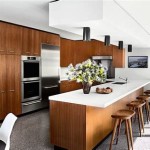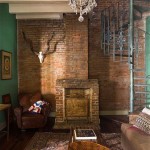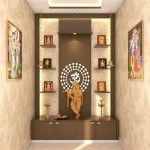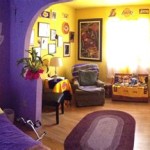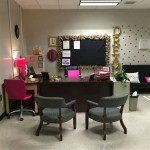How to Decorate a Hall Without Balloons or Strings
Decorating a hall for an event requires careful planning and execution. While balloons and strings are common choices, they are not the only options available. This article provides a comprehensive guide to decorating a hall without relying on these traditional elements, focusing on creating visually appealing and memorable spaces that cater to a variety of events and budgets.
The key to successful hall decoration lies in understanding the purpose of the event, the architectural features of the hall, and the desired atmosphere. Before beginning any physical decorations, meticulous planning is essential. This involves defining the event's theme, color palette, and overall design aesthetic. Consideration should also be given to the hall's existing lighting, flooring, and wall colors, as these factors will influence the effectiveness of any decorative elements.
Budgetary constraints also play a significant role in the decoration process. Determining the maximum amount allocated for decorations will guide the selection of materials and the complexity of the designs. It is advisable to prioritize key areas of the hall, such as the entrance, stage, or focal points, to maximize the visual impact while staying within budget.
Leveraging Fabrics and Draping
Fabrics offer a versatile and elegant alternative to balloons and strings. Draping fabrics across ceilings, walls, and entryways can transform a sterile or uninspired space into a visually rich and inviting environment. Fabrics come in a wide range of textures, colors, and patterns, allowing for customization to suit the specific event's theme.
For instance, lightweight fabrics such as chiffon or voile can create a soft and ethereal atmosphere, ideal for weddings or formal gatherings. These fabrics can be draped in flowing patterns from the ceiling to create a canopy effect or used to soften the harsh lines of walls. Heavier fabrics like velvet or brocade can add a touch of luxury and sophistication, suitable for corporate events or galas. These materials are best for creating striking backdrops or framing specific areas.
The choice of fabric color should complement the overall color palette of the event. Neutral tones like white, ivory, or beige are versatile and can be easily paired with other colors. Bold colors like red, gold, or royal blue can add drama and visual interest, but should be used sparingly to avoid overwhelming the space. Layering different fabrics of varying colors and textures can add depth and complexity to the design.
When using fabrics, it is imperative to ensure they are securely fastened and meet all safety regulations. Fire-resistant fabrics are highly recommended, especially in venues with open flames or electrical equipment. Professional installation is often advisable, particularly for complex draping designs, to ensure both aesthetic appeal and safety.
Consider the hall's existing fixtures when planning fabric draping. Chandeliers, lighting fixtures, and architectural details can be incorporated into the design to create a cohesive and visually appealing look. For example, fabrics can be draped around chandeliers to enhance their elegance or used to highlight architectural features like columns or arches.
Utilizing Lighting Techniques
Strategic lighting is a powerful tool for transforming a hall's atmosphere without relying on balloons or strings. Different lighting techniques can be used to create mood, highlight focal points, and add visual interest to the space.
Uplighting, which involves placing light fixtures at the base of walls or columns and directing the light upwards, can create a dramatic and elegant effect. Uplighting can be used to highlight architectural features, add depth to the space, and create a sense of height. The color of the uplighting can be customized to match the event's theme or create a specific mood. For example, warm tones like amber or gold can create a cozy and inviting atmosphere, while cool tones like blue or purple can create a more sophisticated and formal ambiance.
Spotlighting can be used to highlight specific areas or objects, such as the stage, the head table, or artwork. Spotlights can be focused to create a dramatic effect or diffused to create a soft and subtle glow. The intensity and color of the spotlight can be adjusted to suit the specific object being highlighted.
String lights, while often used in conjunction with balloons, can also be used independently to create a whimsical and enchanting atmosphere. String lights can be draped across ceilings, wrapped around columns, or used to outline architectural features. The type of string lights used should be carefully considered. Warm white lights create a cozy and inviting atmosphere, while colored lights can add a playful and festive touch. Ensure the string lights used are LED lights for energy efficiency and safety.
Gobo projectors can project patterns or images onto walls or floors. Gobos can be customized with logos, monograms, or other designs to personalize the space and reinforce the event's theme. Gobo projectors can be used to create a dynamic and visually engaging environment without requiring any physical decorations.
Consider the existing lighting in the hall when planning the lighting design. The existing light fixtures can be incorporated into the design or supplemented with additional lighting to create the desired effect. Dimmers can be used to adjust the brightness of the lights and create different moods throughout the event.
Employing Floral Arrangements and Greenery
Floral arrangements and greenery provide a natural and visually appealing alternative to balloons and strings. Flowers and plants can add color, texture, and fragrance to the hall, creating a welcoming and vibrant atmosphere.
Centerpieces are a key element of hall decoration, particularly for events with tables. Floral centerpieces can range from simple and elegant to elaborate and extravagant, depending on the event's theme and budget. Tall centerpieces can add height and drama to the tables, while low centerpieces allow for easy conversation. The flowers used in the centerpieces should complement the overall color palette of the event.
Greenery, such as ferns, eucalyptus, or ivy, can be used to add texture and depth to the floral arrangements. Greenery can also be used independently to create a natural and organic look. Garlands of greenery can be draped across tables, hung from ceilings, or used to outline architectural features.
Potted plants can be used to add greenery and visual interest to the hall. Large potted plants can be placed in corners or along walls to create a natural barrier or to fill empty spaces. Smaller potted plants can be used as table decorations or placed on shelves or ledges.
Consider the seasonality of the flowers and greenery when planning the floral arrangements. Seasonal flowers are typically more affordable and readily available, and they can reflect the time of year the event is taking place. Local florists can provide guidance on the best seasonal flowers and greenery for the event.
When selecting floral arrangements, it is vital to consider any potential allergies of the attendees. Choose hypoallergenic flowers and avoid heavily scented arrangements to minimize the risk of allergic reactions. Ensure the floral arrangements are properly watered and maintained throughout the event to keep them looking fresh and vibrant.
In addition to traditional floral arrangements, consider using alternative materials such as branches, twigs, or moss to create unique and interesting displays. These materials can add a rustic or natural touch to the hall and can be a more sustainable option than using cut flowers. These can be arranged in vases or containers, or used to create wall decorations or sculptures.
The placement of floral arrangements is crucial to their impact. Consider the sightlines of the hall and ensure that the arrangements do not obstruct views or impede movement. Place arrangements in areas where they will be most visible and appreciated, such as the entrance, the stage, or near seating areas.
By thoughtfully incorporating fabrics, lighting, and floral arrangements, event organizers can transform a hall into a memorable and visually stunning space without depending on traditional decorations like balloons and strings. Careful planning and attention to detail are vital to achieving a cohesive and impactful design that enhances the overall event experience.

Celebrating Creatively Birthday Decorations Without Balloons Blog

10 Balloon Decorating Ideas Without Helium

10 Balloon Decorating Ideas Without Helium

Diy Ceiling Balloons Without Helium All Materials Sponsored By Part Balloon Decoration Tiktok

How To Decorate A Birthday Party Room With Balloons 11 Ideas

Balloon Ceiling Diy Inspo Devine Bride

Top Birthday Decoration Ideas At Home

Diy Birthday Decoration Ideas For Your Home

How To Make A Seriously Easy Balloon Garland Lovely Lucky Life

10 Balloon Decorating Ideas Without Helium
